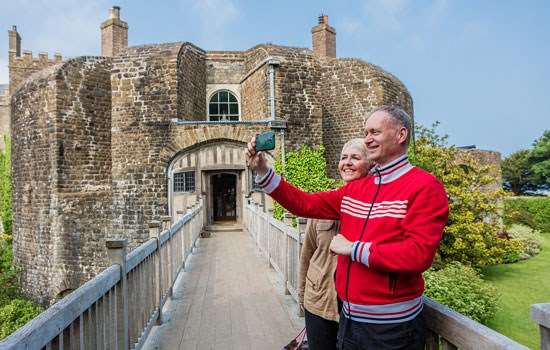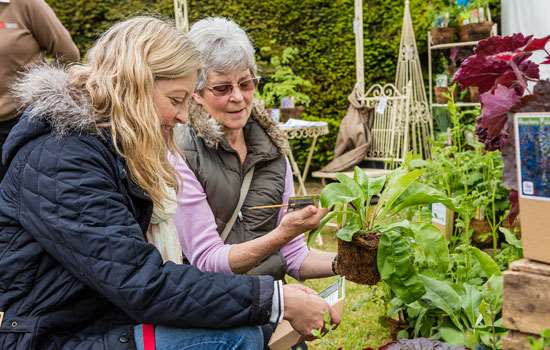Clearly reflecting the work of three Lords Warden, the Broadwalk has considerable significance to the historic setting of Walmer's Gardens. Earl Granville, Earl Beauchamp and the Marquess of Willingdon all added design influences prevalent in their time. Today, the castle's gardeners continue the evolution of this breath-taking centrepiece to the pleasure grounds at Walmer.
Creating the Broadwalk
In 1866 the Granvilles, in thrall to the fashion for long vistas in the Italian style, commissioned a professional landscape gardener, William Masters, then in his seventies. His enthusiastic reaction was to draw up an elaborate design for a border with flowering plants running in zigzags, like ribbons, along the entire length of an 80-metre border. It was to be backed by a high clipped hedge to set off the plants to their best advantage.
Earl Beauchamp
The formal style of the Broadwalk was loosened by a subsequent Lord Warden, William Lygon, 7th Earl of Beauchamp. He and his wife, Lady Lettice Grosvenor, were leading lights in fashionable London society and occasionally used Walmer for entertainment. Extending the Broadwalk's axis south-west, they visually strengthened it with two sets of steps in grass banks. Reflecting the influence of Gertrude Jekyll, Beauchamp replanted the broadwalk in the looser yet more fashionable arts and crafts style she had popularised. In a dramatic touch, Beauchamp emphasized the long view of the sky beyond with the addition of a 'keyhole' view through the western tree belt, one of the gardens' most striking visual features.
Known for holding racy parties at Walmer Castle, Beauchamp later became embroiled in a scandal that proved disastrous to his career and personal life. His unfortunate story provided the inspiration for Evelyn Waugh's famous novel Brideshead Revisited.
Discover Beauchamp's StoryThe Cloud Hedge
On of the more unusual, memorable and visually striking features of the Broadwalk is created by the bordering yew hedges. Granville's geometric green border has evolved into an organic, undulating 'cloud' hedge. It is said that the hedge was neglected during the Second World War, and that a heavy weight of snow during the hard winter of 1947 made it even more misshapen, a form in which it has been kept since. Whether this tale is true is ambiguous, however it is certain that the yew hedges have held an informal style since at least the 1960s - 70s.
Faced with radical pruning to pull it into line, it was decided instead to follow the hedge's new contours and sculpt it into what you see today, an exuberant backdrop which compliments the relaxed planting of herbaceous perennials. The double border is superb throughout the summer with drifts of plants such as bear's breeches (Acanthus spinosus), spiked blue Echinops ritro, goldenrod (Solidago) and dark pink Persicaria amplexicaulis.
Continuing Evolution
Beyond active maintenance, the goal of Walmer's gardeners is to continually improve and enhance all of the castle's gardens, highlighting the best aspects of their historic designs. Over time, evolution of the plantings and colour schemes will allow these aspects to shine through, and the broadwalk is a spectacular example of this in action.
Following years of improvement, the colour scheme inspired by Gertrude Jekyll has been reinstated to the Broadwalk. Now in perfect visual tandem with the undulating cloud hedge, the colours create an unparalleled level of movement and flow within the scene.
Evolving design influences and skilled upkeep make the Broadwalk a perfect centrepiece to Walmer's gardens, and a must see for anyone with an interest in unique garden design.
Explore Walmer's Gardens
-

The Kitchen Garden
Explore the fruit trees, vegetable beds and glasshouses of Walmer's Kitchen Garden.
-

Seasonal Garden Highlights
From spring sowing to autumn pumpkins, discover the best of Walmer's growing season.
-

QUEEN MOTHER'S GARDEN
Enjoy the Queen Mother's Garden, gifted to Queen Elizabeth the Queen Mother for her 95th birthday.
-

Re-Discovering Walmer's Pleasure Grounds
Find out more about the £2.3m project to revive and reunite parts of Walmer's historic gardens.



